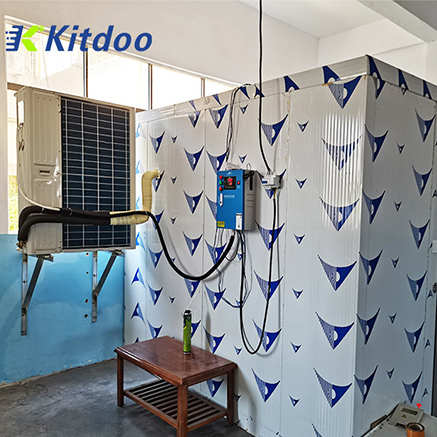Which is better, air cooler or aluminum exhaust? How to choose?
Jul 07, 2023
A cold storage evaporator is an evaporator used in refrigeration equipment such as cold storage. Its principle is that a low-temperature and low-pressure liquid refrigerant vaporizes and absorbs heat on one side of the evaporator's heat transfer wall, thereby cooling the medium on the other side of the heat transfer wall. The cooled medium is usually water or air. Cold storage evaporators can be divided into two categories: The first type: the air is used as the Natural convection evaporative cold storage pipes, such as the wall pipes and top pipes widely used in cold storage, which are generally of the tube type, single row coil pipe, double row coil pipe, double row U-shaped pipe or four row U-shaped pipe type. The second type: cold air fans with forced air flow often adopt measures such as increasing the heat transfer temperature difference, adding fins to the heat transfer tube, or increasing the air flow rate to improve heat transfer performance. Air cooler evaporator Advantages: The cold air fan mainly relies on convective heat transfer, which is easy to construct and compact in structure. It occupies small space in the cold storage and has little impact on the usage space of the cold storage. There is no requirement for the load bearing on the top of the warehouse, which is common in the assembly cold storage and small Freon cold storage. High heat exchange efficiency, reduced use of materials, reduced costs, forced circulation of air by fans, and faster cooling speed in cold storage. Defrosting is convenient and easy to control, capable of automatic control, easy to operate, and easy to manage. Generally, copper tubes and aluminum fins are used in the market, which have high pressure resistance, strong corrosion resistance, and are not easy to leak. Disadvantages: Due to the forced circulation of the fan, the air flow in the cold storage is fast, and the food in the cold storage is easy to air dry, resulting in high drying consumption of inventory goods. Moreover, the fan itself consumes electrical energy, and the evaporator also needs to defrost frequently. Most small and medium-sized cold storage rooms use electric heating wires to heat the capacity for frost. This periodic defrosting operation of the cold air fan not only causes energy waste, but also causes an increase in the temperature inside the warehouse. evaporative cold storage pipes Advantages: The advantage of aluminum exhaust is that it has an advantage in cold storage capacity compared to a fan, without the need for a fan, and is more energy-efficient. Moreover, the dry consumption of food is low, and the pressure resistance of the exhaust pipe is high. Disadvantages: It occupies a large space and, in some cases, affects the usage area. It mainly relies on radiation heat transfer and does not require a fan. The cooling process is slower than that of a fan, and the defrosting cycle is longer after frost formation, usually twice a year. Defrosting can be done by sweeping frost...
view more
